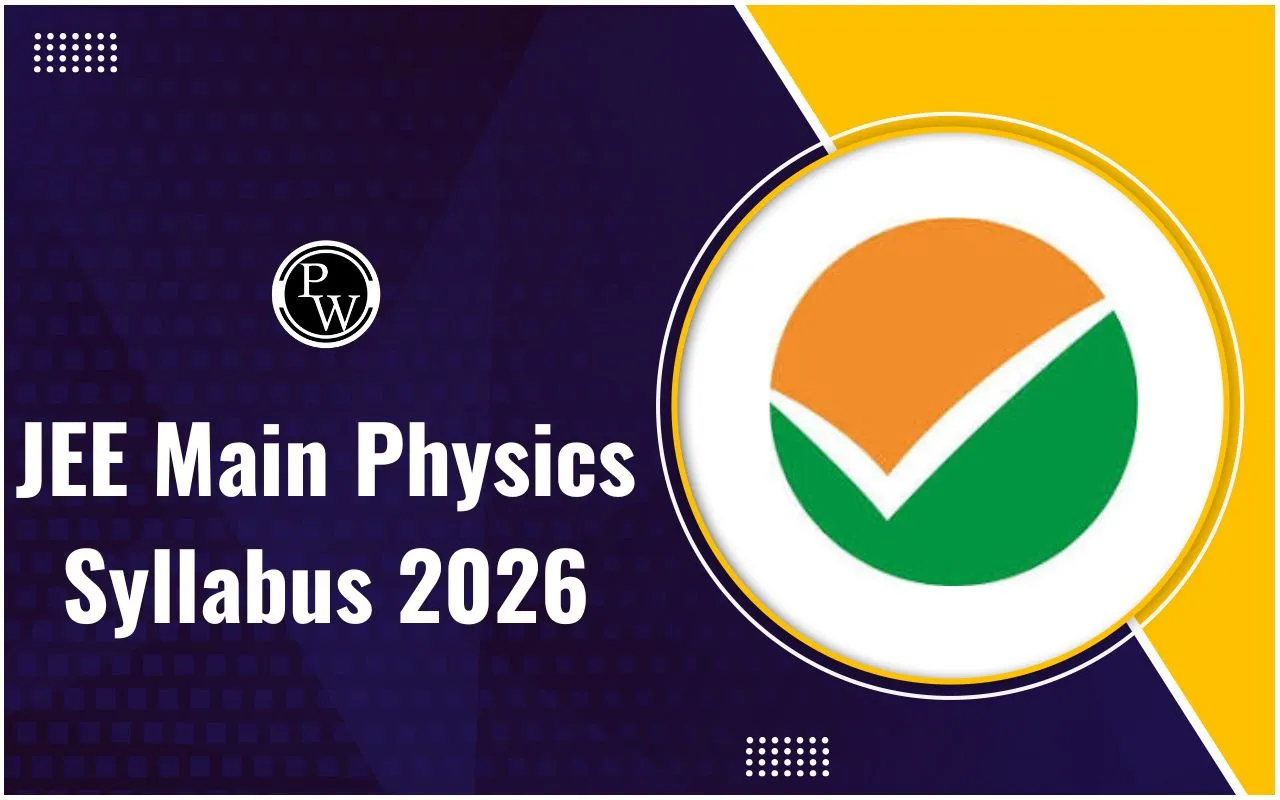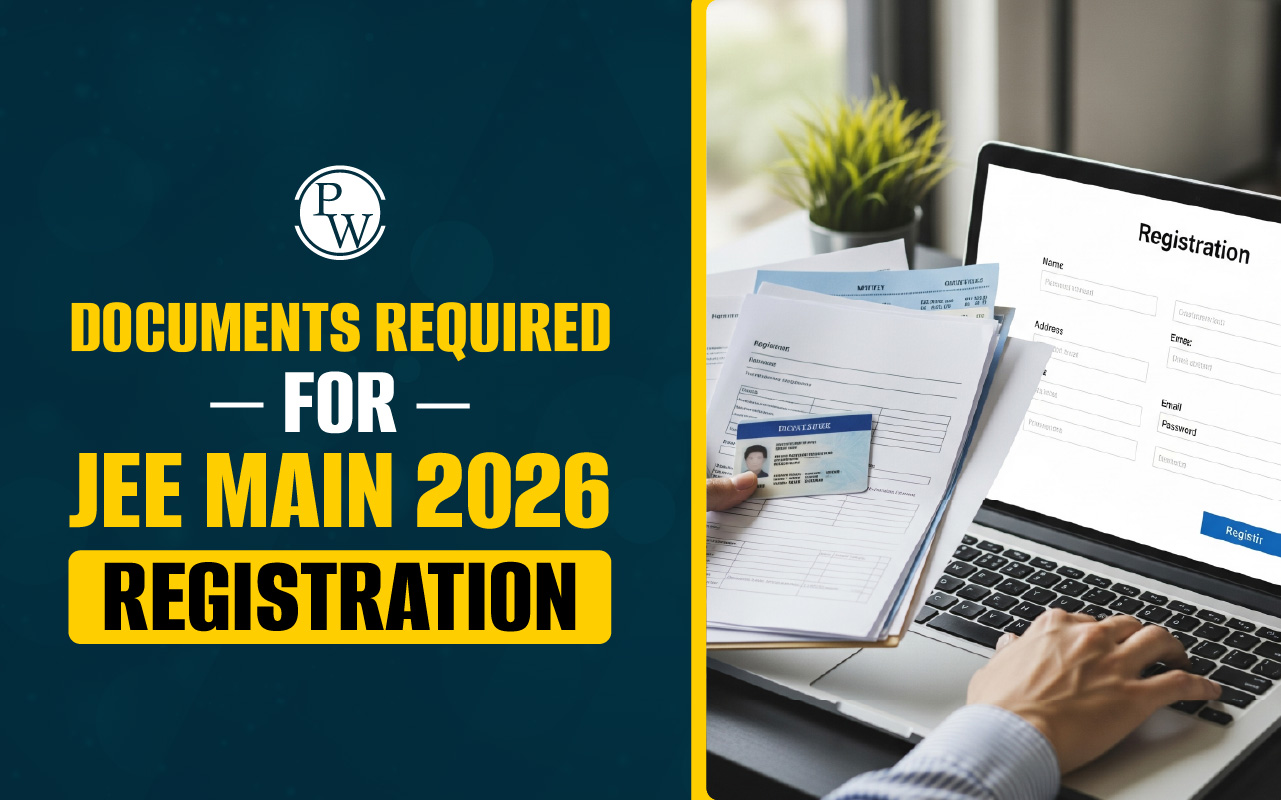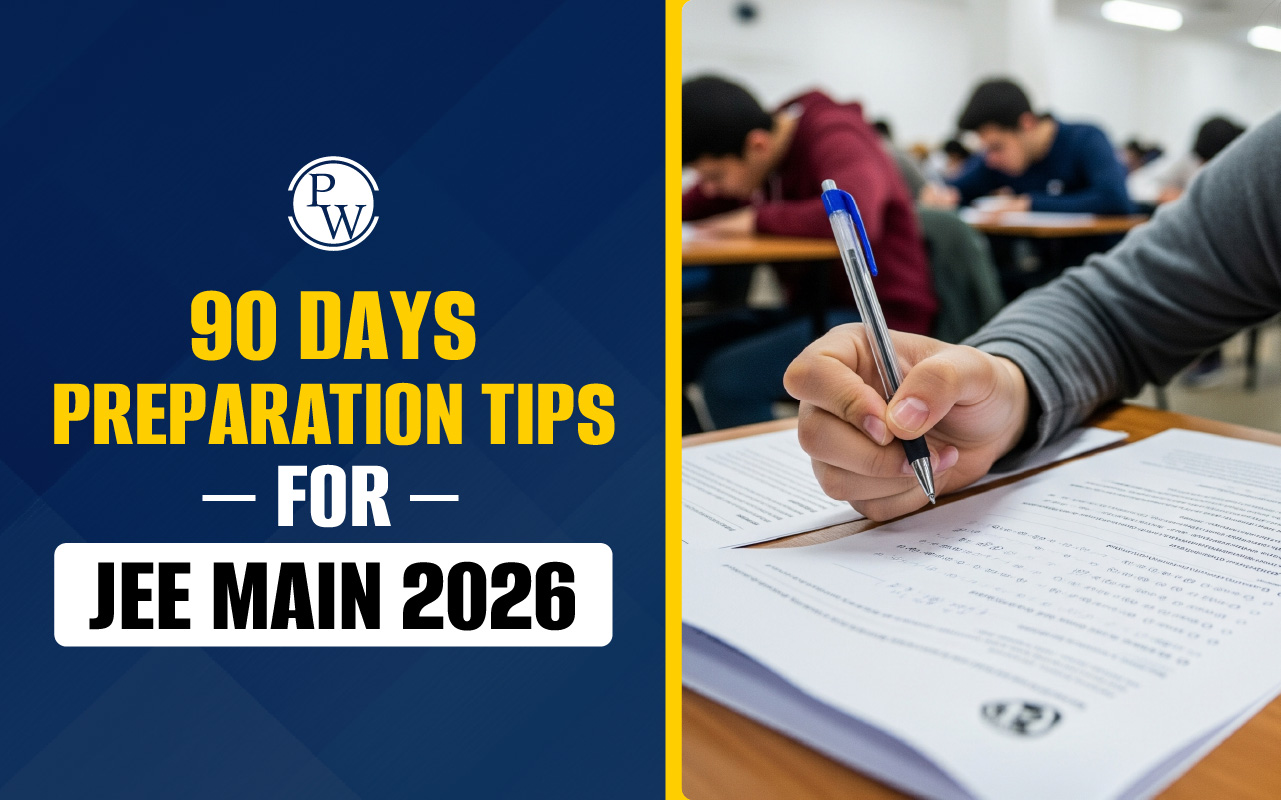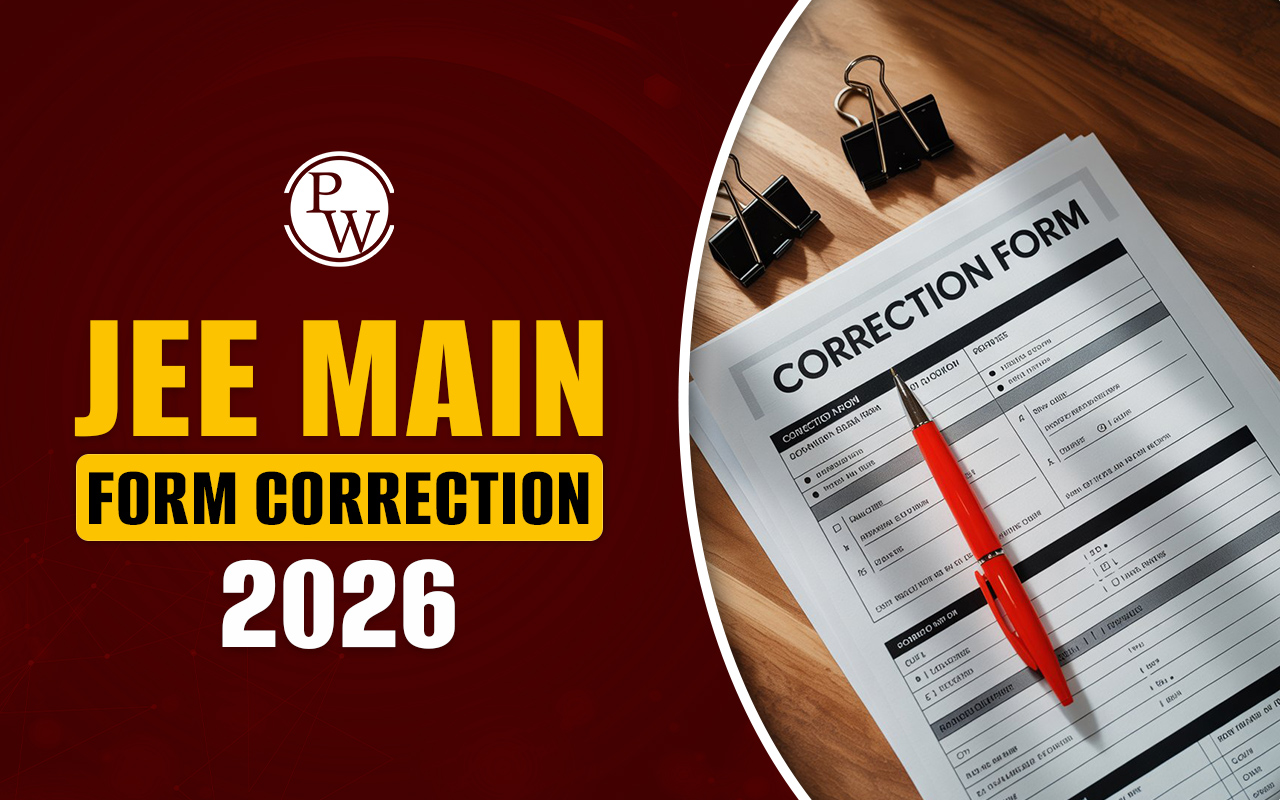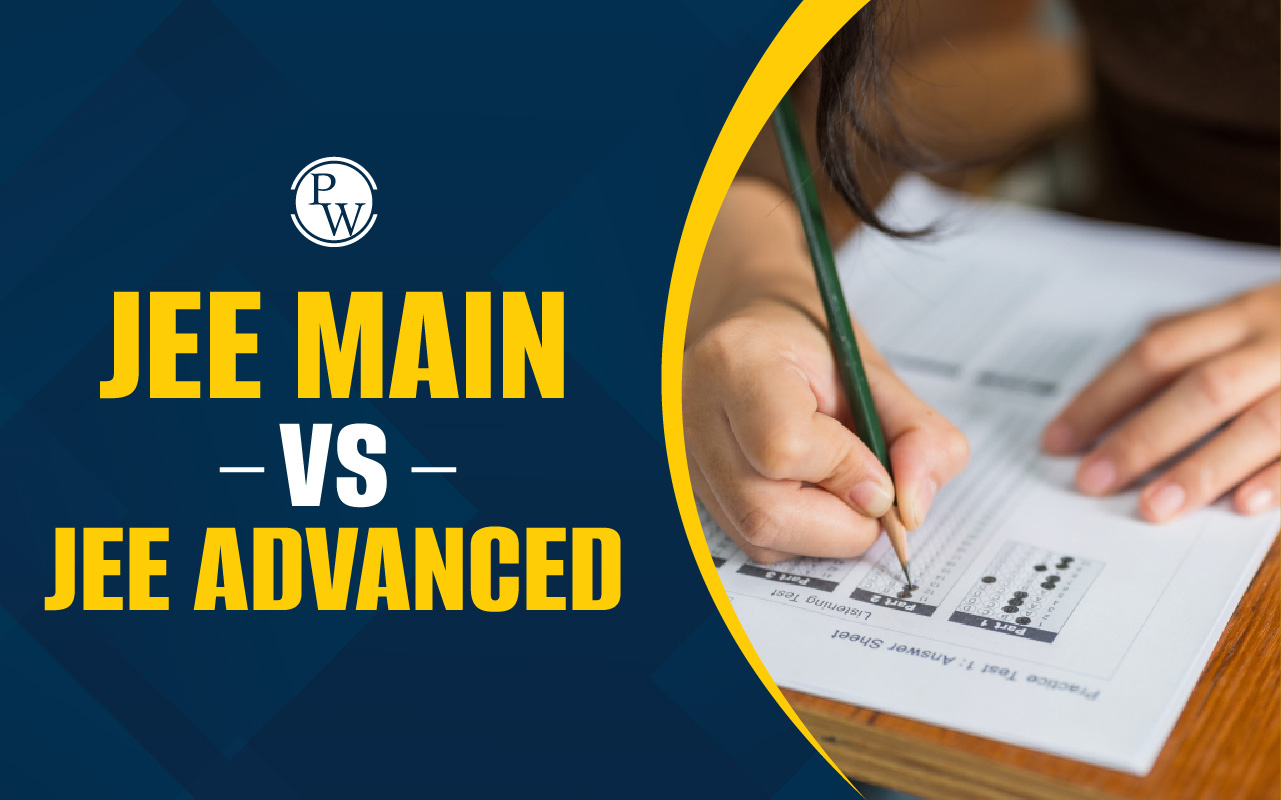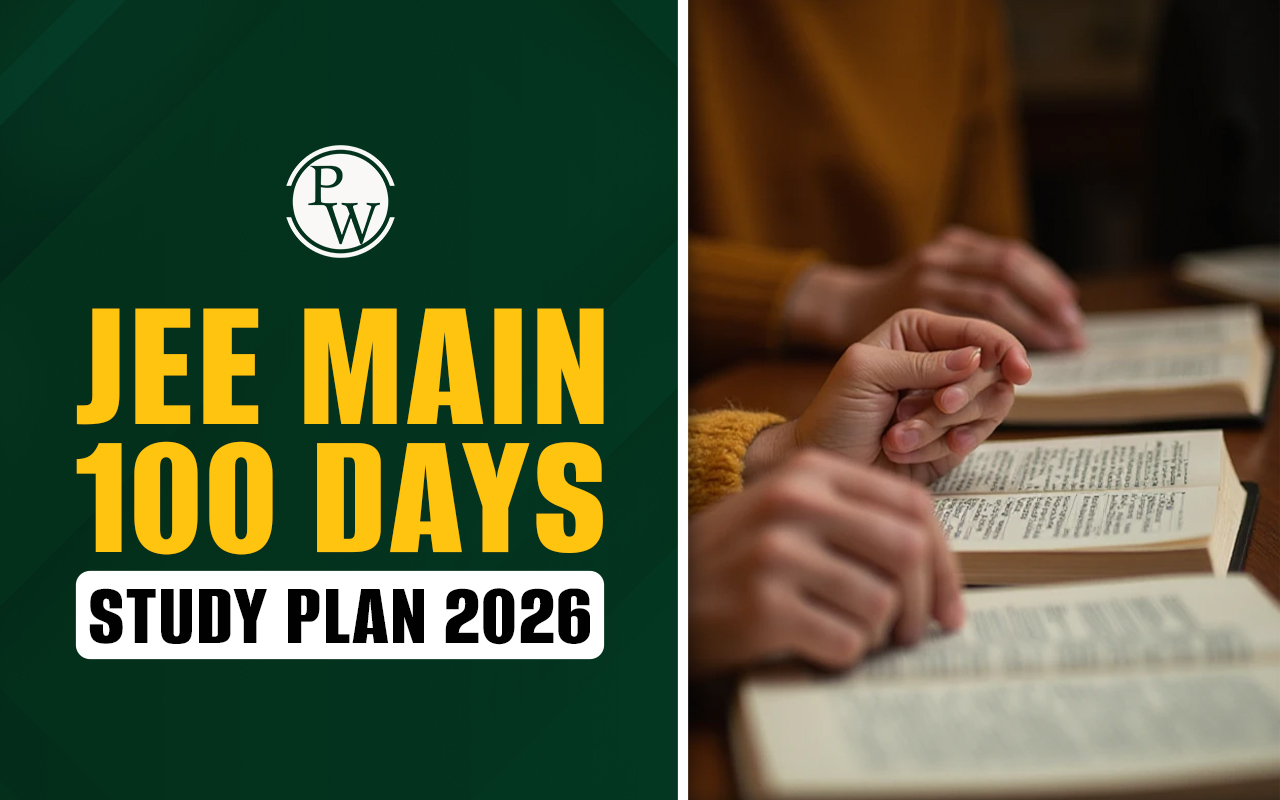
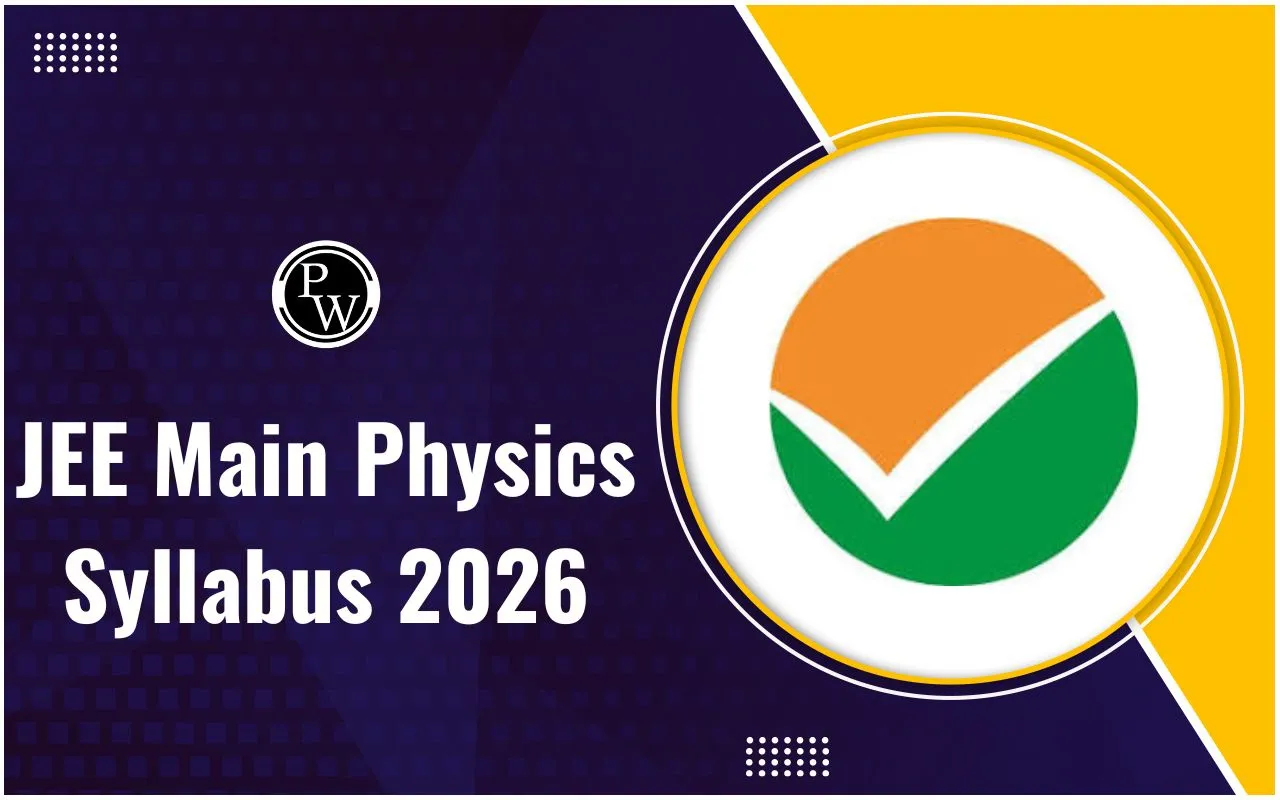
JEE Main Physics syllabus 2026 : The Physics syllabus for JEE Main 2026 is yet to be announced. Aspirants appearing for the exam for the first time in 2026 can look at the syllabus for JEE Main 2025 Physics for the time being as a reference.
National Testing Agency (NTA) has officially published the JEE Main 2025 syllabus in PDF. Candidates can go through the entire syllabus to plan a well-structured preparation strategy. It is important to note that the JEE Main 2025 syllabus remains unchanged from the previous year.
In the last jee main syllabus revision, there were a few topics that were deleted from Physics, Chemistry, and Mathematics. Of particular mention is in the Physics part—namely in the chapter Kinematics—where there were some changes. Very important concepts like Scalars and Vectors were cut out from the JEE Main 2025 syllabus.
For Physics, approximately 50–55% of the questions generally arise from Class 11 subjects, mainly dealing with Mechanics and Waves. The rest, i.e., 45–50%, are based on Class 12 subjects, with emphasis on Electrodynamics and Modern Physics.
JEE Main Physics Syllabus 2026 Overview
JEE Main 2026 Physics syllabus has yet to be declared by the National Testing Agency (NTA). Physics syllabus is based on the NCERT curriculum for Classes 11 and 12 and is divided into two sections.Section A is the theory section and holds 80% weightage of the exam, whereas Section B is practical elements or experimental techniques with 20% weightage. The candidates are recommended to study according to the 2025 syllabus until the new 2026 syllabus is released officially.
JEE Main Physics Syllabus PDF Download
Candidates can click the below link to download JEE Main Physics Syllabus PDF for Section A and Section B both
JEE Main Physics Syllabus PDF
JEE Main Physics Syllabus 2026 for Section A
JEE Main Physics Syllabus 2026 for Section A consists of basics that you need to learn for jee main. Concepts of Physics, Mechanics, Rotations, Work and Energy, Laws of Motion, Gravitation, and Thermodynamics are what candidates have to study. The Physics section basically depends on these topics and it needs to be covered well for scoring good marks in the exam.
|
JEE Main Physics Syllabus 2026 for Section A |
|
|
Units |
Topics |
|
Units and Measurements |
Units of measurements, System of units, SI Units, fundamental and derived units, least count, significant figures, Errors in measurements. Dimensions of Physics quantities, dimensional analysis and its applications. |
|
Kinematics |
The frame of reference, motion in a straight line, speed and velocity, uniformand non-uniform motion, average speed and instantaneous velocity, uniformly accelerated motion, velocity-time, position-time graph, relations for uniformly accelerated motion, relative velocity. Motion in a plane, projectile motion, uniform circular motion |
|
Laws of Motion |
Force and inertia, Newton’s first law of motion, momentum, Newton’s secondLaw of motion, impulse, Newton’s third Law of motion. Law of conservation of linear momentum and its applications, equilibrium of concurrent forces. Static and Kinetic friction, laws of friction, rolling friction. Dynamics of uniform circular motion, centripetal force and its applications: vehicle on a level circular road, vehicle on a banked road. |
|
Work, Energy and Power |
Work done by a constant force and a variable force, kinetic and potential energies, work-energy theorem, power. The potential energy of a spring, conservation of mechanical energy, conservative and non- conservative forces, motion in a vertical circle. Elastic and inelastic collisions in one and two dimensions. |
|
Rotational Motion |
Centre of mass of a two-particle system, centre of mass of a rigid body. Basic concepts of rotational motion, moment of a force, torque, angular momentum, conservation of angular momentum and its applications. The moment of inertia, the radius of gyration, values of moments of inertia for simple geometrical objects, parallel and perpendicular axes theorems and their applications. Equilibrium of rigid bodies, rigid body rotation and equations of rotational motion, comparison of linear and rotational motions. |
|
Gravitation |
The universal law of gravitation. Acceleration due to gravity and its variationwith altitude and depth. Kepler’slaw of planetary motion. Gravitational potential energy, gravitational potential. Escape velocity, motion of a satellite, orbital velocity, time period and energy of satellite |
|
Properties of Solids and Liquids |
Elastic behaviour, stress-strain relationship, Hooke's Law, Young's modulus, bulk modulus and modulus of rigidity. Pressure due to a fluid column, Pascal's law and its applications, effect of gravity on fluid pressure, viscosity, Stoke’s law, terminal velocity, streamline and turbulent flow, critical velocity, Bernoulli's principle and its applications. Surface energy and surface tension, angle of contact, excess of pressure across a curved surface, application of surface tension: drops, bubbles and capillary rise. Heat, temperature, thermal expansion, specific heat capacity, calorimetry, change of state, latent heat. Heat transfer: conduction, convection and radiation. |
|
Thermodynamics |
Thermal equilibrium and the concept of temperature, zeroth law of thermodynamics, heat, work and internal energy. The first law of thermodynamics, isothermal and adiabatic processes. The second law of thermodynamics: reversible and irreversible processes. |
|
Kinetic Theory of Gases |
Equation of state of a perfect gas, work done on compressing a gas, kinetic theory of gases: assumptions, the concept of pressure, kinetic interpretation of temperature, RMS speed of gas molecules, degrees of freedom, law of equipartition of energy and applications to specific heat capacities of gases, mean free path, Avogadro's number. |
|
Oscillations and Waves |
Oscillations and periodic motion: time period, frequency, displacement as a function of time, periodic functions. Simple harmonic motion (S.H.M.) and its equation, phase, oscillations of a spring: restoring force and force constant, energy in S.H.M.: kinetic and potential energies, simple pendulum: derivation of expression for its time period. Wave motion, longitudinal and transverse waves, speed of the travelling wave, displacement relation for a progressive wave, principle of superposition of waves, reflection of waves, standing waves in strings and organ pipes, fundamental mode and harmonics, beats |
|
Electrostatics |
Electric charges: conservation of charge, Coulomb's law forces between two point charges, forces between multiple charges, superposition principle and continuous charge distribution. Electric field: electric field due to a point charge, electric field lines, electric dipole, electric field due to a dipole, torque on a dipole in a uniformelectric field. Electric flux, Gauss's law and its applications to find fields due to infinitely long uniformly charged straight wire, uniformly charged infinite plane sheet and uniformly charged thin spherical shell. Electric potential and its calculation for a point charge, electric dipole and system of charges, potential difference, equipotential surfaces, electrical potential energy of a system of two point charges and of electric dipole in an electrostatic field. Conductors and insulators, dielectrics and electric polarization, capacitors and capacitance, the combination of capacitors in series and parallel and capacitance of a parallel plate capacitor with and without dielectric medium between the plates, energy stored in a capacitor. |
|
Current Electricity |
Electric current: drift velocity, mobility and their relation with electric current, Ohm's law, electrical resistance, I-V characteristics of Ohmic and non-ohmic conductors, electrical energy and power, electrical resistivity and conductivity, series and parallel combinations of resistors, temperature dependence of resistance. Internal resistance, potential difference and emf of a cell, a combination of cells in series and parallel. Kirchhoff’s laws and their applications, Wheatstone bridge, Metre Bridge |
|
Magnetic Effects of Current and Magnetism |
Biot - Savart law and its application to the current carrying circular loop, Ampere's law and its applications to infinitely long current carrying straight wire and solenoid. Force on a moving charge in uniform magnetic and electric fields, force on a current-carrying conductor in a uniform magnetic field, the force between two parallel currents carrying conductors-definition of ampere, torque experienced by a current loop in a uniform magnetic field: Moving coil galvanometer, its sensitivity and conversion to ammeter and voltmeter. Current loop as a magnetic dipole and its magnetic dipole moment, bar magnet as an equivalent solenoid, magnetic field lines, magnetic field due to a magnetic dipole (bar magnet) along its axis and perpendicular to its axis, torque on a magnetic dipole in a uniform magnetic field, para-, dia- and ferromagnetic substances with examples, the effect of temperature on magnetic properties |
|
Electromagnetic Induction and Alternating Currents |
Electromagnetic induction: Faraday's law, induced emf and current, Lenz’s law, eddy currents, self and mutual inductance. Alternating currents, peak and RMS value of alternating current/voltage, reactance and impedance, LCR series circuit, resonance, power in AC circuits, wattless current, AC generator and transformer. |
|
Electromagnetic Waves |
Displacement current, electromagnetic waves and their characteristics, transverse nature of electromagnetic waves, electromagnetic spectrum(radiowaves, microwaves, infrared, visible, ultraviolet, X-rays, Gamma rays), applications of electromagnetic waves. |
|
Optics |
Reflection of light, spherical mirrors, mirror formula. Refraction of light at plane and spherical surfaces, thin lens formula and lens maker formula, total internal reflection and its applications, magnification, power of a lens, combination of thin lenses in contact, refraction of light through a prism, microscope and astronomical telescope (reflecting and refracting ) and their magnifying powers. Wave optics: wavefront and Huygens ‘Principle, laws of reflection and refraction using Huygens principle. Interference: Young's double-slit experiment and expression for fringe width, coherent sources and sustained interference of light. Diffraction due to a single slit, width of central maximum. Polarization: plane-polarized light, Brewster's law, uses of plane- polarized light and Polaroid. |
|
Dual Nature of Matter and Radiation |
Dual nature of radiation, Photoelectric effect, Hertz and Lenard's observations, Einstein's photoelectric equation, particle nature of light. Matter waves: wave nature of particle, de- Broglie relation. |
|
Atoms and Nuclei |
Alpha-particle scattering experiment, Rutherford's model of atom, Bohr model, energy levels, hydrogen spectrum. Composition and size of nucleus, atomic masses, mass-energy relation, mass defect, binding energy per nucleon and its variation with mass number, nuclear fission and fusion. |
|
Electronic Devices |
Semiconductors, semiconductor diode: I-V characteristics in forward and reverse bias, diode as a rectifier; I-V characteristics of LED, the photodiode, solar cell, Zener diode, Zener diode as a voltage regulator. Logic gates (OR. AND. NOT. NAND and NOR). |
JEE Main Physics Syllabus 2026 For Section B
Candidates can refer to the following table for JEE Main Physics syllabus 2026 For (Section B). The section contains practical-based subjects like Vernier Calipers, Screw Gauge, Metre Scale, Characteristic Curves, and Measurement of Resistance. These are foundational subjects of experimental physics and are usually seen in lab-based questions.
|
JEE Main Physics Syllabus 2026 For Section B |
|
|
S.No. |
Topics |
|
1 |
Vernier callipers-its use to measure the internal and external diameter and depth of a vessel. |
|
2 |
Screw gauge-its use to determine thickness/ diameter of thin sheet/wire |
|
3 |
Simple Pendulum- dissipation of energy by plotting a graph between the square of amplitude and time. |
|
4 |
Metre Scale - the mass of a given object by the principle of moments. |
|
5 |
Young's modulus of elasticity of the material of a metallic wire. |
|
6 |
Surface tension of water by capillary rise and the effect of detergents, |
|
7 |
Coefficient of Viscosity of a given viscous liquid by measuring the terminal velocity of a given spherical body, |
|
9 |
Speed of sound in air at room temperature using a resonance tube |
|
10 |
Specific heat capacity of a given |
|
11 |
The resistivity of the material of a given wire using a metre bridge. |
|
12 |
The resistance of a given wire using Ohm's law. |
|
14 |
Resistance and figure of merit of a galvanometer by half deflection method. |
|
15 |
The focal length of |
|
16 |
The plot of the angle of deviation vs angle of incidence for a triangular prism |
|
17 |
The Refractive index of a glass slab using a travelling microscope. |
|
18 |
Characteristic curves of a p-n junction diode in forward and reverse bias. |
|
19 |
Characteristic curves of a Zener diode and finding reverse break down voltage. |
|
20 |
Identification of Diode. LED, Transistor. IC. Resistor. A capacitor from a mixed collection of such items. |
JEE Main Chapter-wise Weightage for Physics 2026
JEE Main 2026 Physics chapter weightage is based on previous year question papers. The first 9 chapters contribute to 50% of the questions. Focus on Ray Optics, Units & Measurements, Electrostatics, Thermodynamics, and Fluid Mechanics for maximum marks. Below is a list of chapters with their respective question references and weightage to help identify important topics frequently asked in JEE Main.
|
Chapter Name |
Question No JEE Main 2025 April session |
Question No JEE Main 2025 January session |
|
Ray Optics and Optical Instruments |
19 |
23 |
|
Units and Measurements |
13 |
20 |
|
Rotational Motion |
13 |
14 |
|
Electric Charges and Fields |
13 |
14 |
|
Fluid Mechanics |
10 |
16 |
|
Moving Charges and Magnetism |
12 |
12 |
|
Thermodynamics |
9 |
13 |
|
Electrostatic Potential and Capacitance |
12 |
9 |
|
Wave Optics |
9 |
10 |
|
Dual Nature of Radiation and Matter |
7 |
12 |
|
Semiconductor Electronics |
9 |
10 |
|
Current Electricity |
8 |
9 |
|
Work, Power and Energy |
4 |
11 |
|
Gravitation |
6 |
8 |
|
Electromagnetic Waves |
5 |
9 |
|
Thermal Properties of Matter |
5 |
8 |
|
Waves |
10 |
3 |
|
Alternating Current |
6 |
7 |
|
Kinetic Theory of Gases |
7 |
5 |
|
Atoms |
7 |
5 |
|
Newton’s Laws of Motion |
8 |
3 |
|
Motion in a Plane |
6 |
4 |
|
Motion in a Straight Line |
5 |
4 |
|
Simple Harmonic Motion |
4 |
5 |
|
System of Particles and Centre of Mass |
3 |
5 |
|
Nuclei |
5 |
3 |
|
Mechanical Properties of Solids |
6 |
1 |
|
Electromagnetic Induction |
1 |
6 |
|
Magnetism and Matter |
3 |
0 |
|
Vector and Calculus |
0 |
1 |
Physics Subdiscipline Question Trends
In JEE Main 2024 and 2025, Mechanics, Electromagnetism, and Modern Physics account for over 75% of the Physics questions. Candidates can refer to the table below to focus on these key subjects for better scores.
|
Year |
Mechanics |
Electromagnetism |
Modern Physics |
Heat & Thermodynamics |
Optics |
Oscillation & Waves |
|
2025 |
252 (35.0%) |
194 (26.9%) |
123 (17.1%) |
50 (6.9%) |
63 (8.8%) |
38 (5.3%) |
|
2024 |
218 (36.3%) |
186 (31.0%) |
88 (14.7%) |
42 (7.0%) |
42 (7.0%) |
24 (4.0%) |
JEE Main 2026: Class-wise Distribution of Questions– Physics
Understanding the distribution of questions between Class XI and Class XII can help guide your preparation strategy. In both years, Class XII questions had a slightly higher presence in the paper. However, Class XI holds significant weight, especially in 2024. Refer to the table below to balance your preparation for both classes.
|
Year |
Attempt |
Class XI |
Class XII |
|
2024 |
January |
141 |
159 |
|
April |
143 |
157 |
|
|
2025 |
January |
121 |
129 |
|
April |
109 |
116 |
JEE Main Physics Preparation Tips 2026
Clear concepts and smart preparation are what make a student score well in Physics of JEE Main. How to improve the game of physics for JEE
-
Learn the Basics First : Fundamental concepts form the basis of Physics. Mechanics, thermodynamics, electricity, and optics are your key important subjects to start vital topics. Fundamental will simplify difficult problems in the future.
-
Work on Important points : Some topics are very high-paying in the JEE Main class Poll. Important subjects to focus on are Mechanics, Electrostatics, Current Electricity, and Optics. These points are very less asked and very scoring.
-
Solve Practice Questions: Physics is nothing but using what you learn to solve questions. Attempt maximum questions from NCERT and JEE Main previous year question papers. You are only going to improve with more practice you get.
-
Do Not Memorize, Learn : Rather than learn the concept of how formulas work, instead of just memorizing. If you know why your formula works, it means that wherever the question comes, you will apply it exactly.
-
Time Management : JEE mains are time-bound; therefore, practicing to solve questions within minutes & accuracy is the key. Give yourself the drill of practicing with mock tests to learn when to use that time up during the actual exam.
-
Keep Revising : Don't forget to refresh what you went over so far. Revising will help you remember the basic topics and formulas.
-
Be Positive and Keep It Up : Stick to a regular study routine, don't overthink things, and be confident. The Key is to have the right mentality and put effort into your work.
Study Materials for JEE Main Physics 2026
Get your hands on recommended study resources designed by the faculty at Physics Wallah. These materials align with the syllabus and help you prepare with confidence.
|
Study Materials for JEE Main Physics 2026 |
JEE Main Physics Syllabus 2026 FAQs
Where can I obtain the official Physics syllabus for JEE Main 2026?
Is the Physics syllabus same for JEE Main Paper 1 & Paper 2?
What will the syllabus and exam pattern for JEE Main 2026 be?
Where can I download the official syllabus PDF and check chapter-wise weightage?
Where do I download question papers of JEE Main Physics for previous years?

